The Drag coefficient, or short cw-Value (Cw value) describes the flow resistance of a body when a fluid flows around it. A fluid can be about Water be, but also Airwhich, from a physical point of view, also belongs to the fluids. Often there is also the name Drag coefficient for cw-Value. This value is briefly referred to with the symbol Cw. It is a coefficient, that is, a dimensionless measure. At the same time, the flow resistance coefficient corresponds to the pressure loss coefficient of a body flowed through. From the cw-Value the force of the flow resistance can be calculated taking into account the speed, the density of the fluid and the area of the body.
following our cw-Value calculator
How can you do that cw-Value measure up?
Usually the cw-Value in you wind Tunnel determined. The body for which the calculation is to be made stands on a plate that is equipped with force sensors. The wind acts as a fluid. The force in the direction of the flow is then measured. This results in a value, the drag force Fw. Together with this and the already known quantities (namely the density of the fluid, air density) and the frontal area of the object as well as the speed then becomes the cw-Value calculated.
The following formula is used to calculate the drag coefficient: cw = Fw / qA, = 2 F w /? v² A
Fw describes the experimentally determined drag force. A is the reference area, ? describes the density of the object and v is the speed of the (undisturbed) flow. The reference surface is usually the face of the object against which the flow occurs. There are exceptions here, for example, in the aerodynamics of aircraft, where the Wing area for A is used. It should be noted that the designation Cw (with W for resistance) only is common in German usage. In the English-speaking world, the value is referred to as cd or cx (drag coefficient).
The value can also be calculated numerically depending on the model shape of the object. This works by integrating the distribution of the coefficient of friction and pressure over the model surface.
The cw-Value in the application
Via the <strong>integrated datalog</strong> the measuring values can be stored on the humimeter RH5 paper moisture meter and additional data can be added. You also have the possibility to use the Autolog function. This function automatically saves measuring values in adjustable time intervals. cw-Value For example, you can say how aerodynamic a vehicle is. The air resistance of a car makes indirect statements about the Consumption of the carriage. Even if the frontal area of a vehicle is rarely specified by the manufacturer, there is still a way to calculate the drag force, if you can find out the area. The drag force is obtained by multiplying the drag coefficient by the reference area A.
The associated formula is the following: Fw = Cw * A
Fw as resistance force, Cw as cw-Value and A as the end face of the vehicle.
A modern car has one cw-Value of around 0,3. The lower the cw-Valuethe more aerodynamic a vehicle is. Compared to this, Formula 1 cars, for example, are not as streamlined as one might think. Classic Formula 1 racing cars have a drag coefficient of around 1,2. That's because these racing cars have their speed not achieve that they are particularly aerodynamic, but rather that they are pressed firmly to the ground by their structure and the wind flowing around them. This gives them the opportunity to build up extreme speeds. Especially in curves! But that does not come without a price, because the pressure that is exerted on the vehicle can reach up to a ton at top speeds additional weight act on the car. But it is precisely this weight that ensures that the Formula 1 car not stands out from the track. A commercially available car would become lighter at such high speeds due to its construction and stand out from the road.
Incidentally, motorcycles are judged by theirs cw-Value, not viewed as particularly economical. Even if its sleek shape would speak for it, many other factors play a role here.
Which statements does the cw-Value in cars?
In a car, the fuel consumption depends on the cw-Value. The fuel consumption increases with a higher air resistance. So the smaller the cw-Value is, the less a car consumes. The most streamlined car to date comes from VW and has one cw-Value of 0,189. The air resistance, which the cw-Value significantly influenced, results from the frontal area of the vehicle. If a car had a completely flat surface as an inflow surface, then a cw-Value of 1,0 result.
By reducing the area, the cw-Value be reduced and thus ultimately also the gasoline consumption. An aerodynamicist takes care of reducing this area as effectively as possible and keeping it as low as possible cw-Value to reach. At the same time, aerodynamic vehicles also reduce CO2 emissions and are therefore more environmentally friendly. Another way to get the cw-Value to influence positively is that Lowering of a vehicle. Other accessories, however, such as spoilers on the car, erhöhen the material moisture meter shows you the cw-Value again.
By the way: tuningblog has other options for Calculation of various things on-line. The following gallery provides an overview of other computers.
"Tuningblog.eu" - we keep you up to date on the subject of car tuning and car styling with our tuning magazine and we present you the latest tuned vehicles from all over the world every day. It's best to subscribe to ours Feed and will automatically be informed as soon as there is something new about this post, and of course also to all other contributions.
 tuningblog.eu Your magazine about tuning the car
tuningblog.eu Your magazine about tuning the car




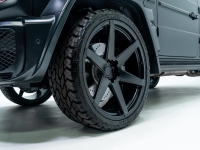
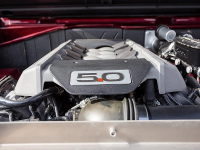
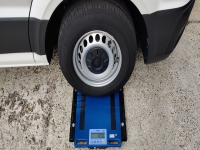
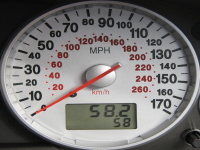
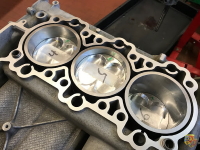


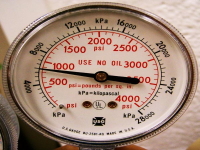








Buenos dias! Una duda, ¿cómo se mediría la Fuerza de resistencia [N] y la superficie corporal fluyendo en contra [㎡]?
Buenos dias! Una duda, ¿cómo se mediría la Fuerza de resistencia [N] y la superficie corporal fluyendo en contra [㎡]?